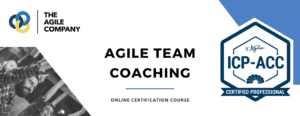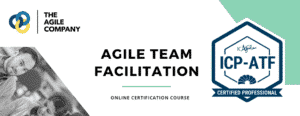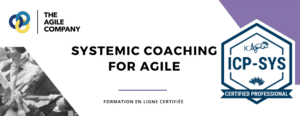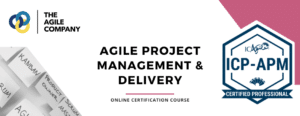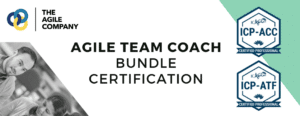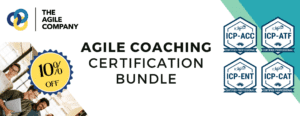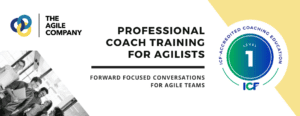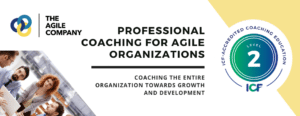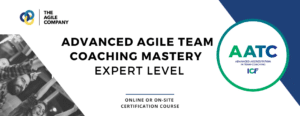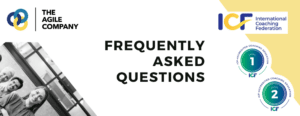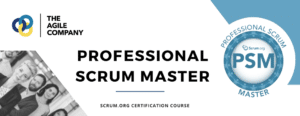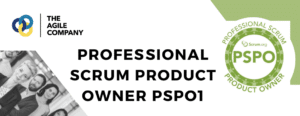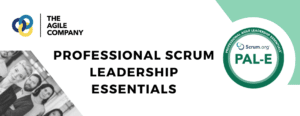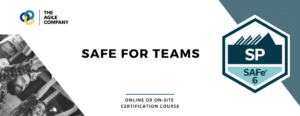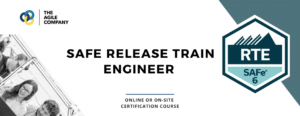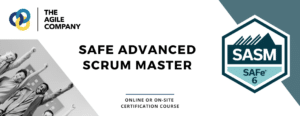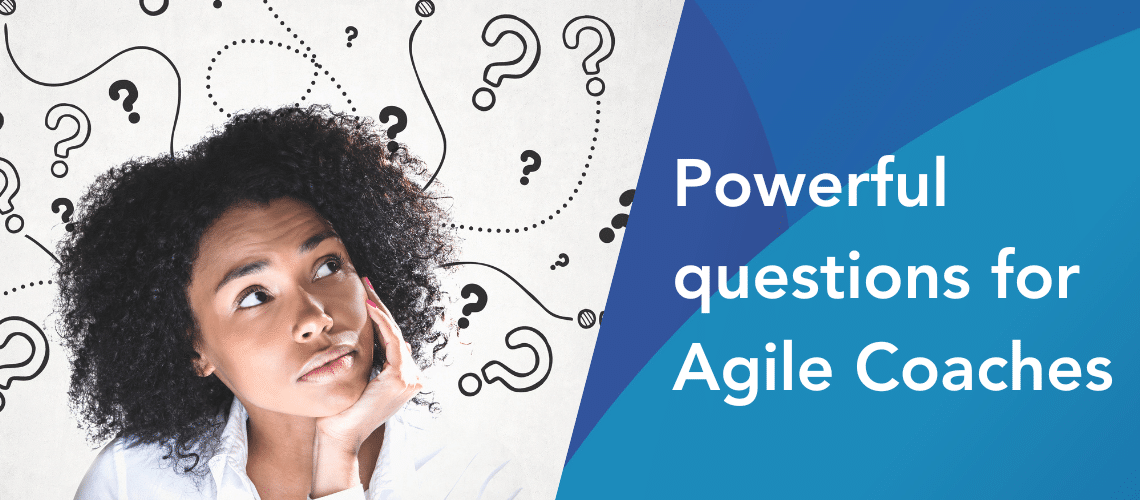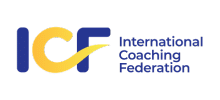In the many forums and LinkedIn groups on coaching, I often see this question pop in in the discussion: “What are the most powerful questions?” Or ” What is your go to Powerful question” or even better; “What makes a powerful question powerful?” My answer is always this: “The most Powerful question, is the question your client needs to hear”.
In the realm of Agile coaching, the potency of questioning extends far beyond a mere list of prepared prompts. It’s not about memorizing a set of questions, but rather about harnessing the power that emerges from deeply listening to and engaging with your client. This approach transforms each coaching session into a unique dance, where the steps are determined by the nuances of the conversation and the unspoken undercurrents present.
At the heart of this method is the art of deep listening. This means fully immersing yourself in the client’s narrative, understanding not just the words spoken but also the emotions, context, and the unsaid. It’s in these depths that you find the catalysts for truly impactful questions, tailored specifically to the client’s individual situation and needs.
Responding to the moment is another crucial aspect. Agile coaching, by its very nature, is dynamic and requires a coach to be adaptable and responsive. The most powerful questions often arise spontaneously, inspired by what is happening in the here and now of the conversation. This could mean diverging from your planned path to explore new, emergent themes that resonate more profoundly with the client at that moment.
Equally important is the ability to focus on both what is and isn’t being said. A client’s pauses, shifts in tone, or non-verbal cues can be just as revealing as their words. Questions that probe these unspoken elements can unlock deeper insights and lead to more meaningful exploration.
The list of questions provided hereunder, should be viewed as a source of inspiration, a springboard from which to leap into the depths of each unique coaching session. They are not rigid templates but flexible guides that should be adapted and molded to fit the unfolding narrative of each conversation. This flexibility allows you to align your questioning with the specific context and needs of your client, making each coaching interaction a unique and customized journey.
Finally, remember that powerful questioning is about creating a collaborative dialogue. It’s a dance where both coach and client are partners, exploring challenges and ideas together. This collaborative spirit not only fosters a deeper connection but also empowers the client, encouraging them to take an active and engaged role in their Agile journey.
In essence, the true art of Agile coaching lies in this dynamic and responsive approach to conversation. It’s about being present, adaptable, and deeply connected to your client, allowing for a coaching experience that is as fluid and evolving as the Agile methodology itself.
Some ideas for Powerful questions in Agile Coaching:
Open and Closed Questions
While many coaches prefer open questions, closed questions are essential for guiding clients towards decisions. For instance:
- “Do you want to continue discussing this topic?”
- “Are you ready to conclude the session?”
- “Would you like to delve deeper into this issue?”
- “Is there a particular aspect of this project you feel we should focus on next?”
- “Are you considering any changes in your current Agile approach?”
These open-ended questions focus on the client’s preferred coaching process, topic selection, and the coach’s role. They foster collaboration, especially when you have a suggestion for the next step. For example, instead of directly asking a resource-activating question, you might offer a direction and then invite the client’s input: “I’m thinking of exploring what has worked for you. Where should we focus next?”
Such open questions are also helpful when you’re uncertain about the next move. They keep the conversation client-centered and resource-focused. Both open and closed questions play crucial roles, as do questions that focus on reflection, future planning, action, feedback, team dynamics, and barrier identification. Here’s how to leverage these varied question types in your Agile coaching conversations:
“How” Questions for Co-Creation
These questions invite clients to shape the coaching journey:
- “How would you like to begin?”
- “How do you typically approach such issues?”
- “How do you envision tackling the challenges in your next sprint?”
- “How can we make our Agile retrospectives more effective?”
- “How do you see your role evolving in the Agile process?”
“What” Questions for Client Preferences
These questions help understand client needs:
- “What topic would you like to start with?”
- “What support do you need from me?”
- “What challenges in your Agile journey would you like to focus on?”
- “What aspects of Agile methodology do you find most beneficial?”
- “What changes do you think could enhance your team’s Agile performance?”
“Where” Questions for Direction
These questions guide the conversation’s flow:
- “Where would you like to start?”
- “Where do you want to go next?”
- “Where do you see potential for improvement in your Agile practices?”
- “Where do you think your team’s strengths lie in the Agile framework?”
- “Where do you feel the most uncertainty in your current Agile approach?”
Reflective Questions for Learning
Encourage clients to reflect on their experiences:
- “What did you learn from your last sprint?”
- “How does your past experience inform your current approach to Agile?”
- “What insights did you gain from your team’s last retrospective?”
- “How have your perspectives on Agile changed over time?”
- “What lessons from past projects can be applied to enhance your Agile methods?”
Future-Focused Questions for Vision
Help clients envision their Agile journey:
- “What are your goals for the next Agile cycle?”
- “How do you see your team evolving with Agile practices?”
- “What long-term outcomes are you aiming for with your Agile practice?”
- “How do you plan to scale Agile practices across your organization?”
- “What does success look like for your team in an Agile environment?”
Action-Oriented Questions for Momentum
These questions prompt clients to think about specific actions:
- “What steps will you take to improve team collaboration?”
- “How will you address challenges in sprint planning?”
- “What immediate steps can you take to improve your sprint planning?”
- “How will you approach stakeholder engagement in your Agile projects?”
- “What actions can you take to foster a more Agile mindset in your team?”
Feedback-Related Questions for Improvement
Promote continuous improvement in Agile environments:
- “How do you plan to gather and implement team feedback?”
- “What feedback mechanisms can enhance the Agile process?”
- “What methods will you use to ensure continuous feedback during Agile projects?”
- “How will you integrate client feedback into your Agile process?”
- “What role do you see feedback playing in your team’s Agile development?”
Team Dynamics Questions for Collaboration
Since Agile relies on team interactions, focus on team behaviors:
- “What strategies will enhance team communication?”
- “How do you plan to encourage team ownership in Agile?”
- “How can you enhance cross-functional collaboration in your Agile team?”
- “What can be done to support team members who are new to Agile?”
- “How will you address different working styles within your Agile team?”
Barrier Identification Questions for Problem-Solving
Identify and address potential obstacles in Agile practices:
- “What are the biggest challenges in adopting Agile?”
- “How do you plan to overcome these barriers?”
- “What obstacles might prevent your team from fully embracing Agile?”
- “How can you mitigate risks associated with Agile transformation?”
- “What strategies will you employ to overcome resistance to Agile methods?”
Each of these questions is designed to provoke thought, encourage reflection, and foster active engagement in the Agile coaching process. By using these diverse question types, coaches can help clients explore different dimensions of their Agile journey, from practical steps to broader strategic thinking.

